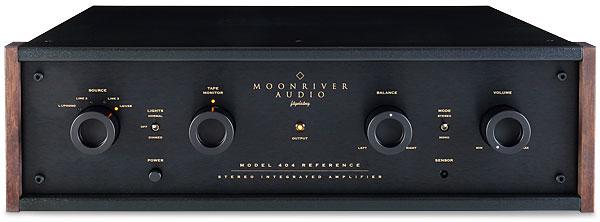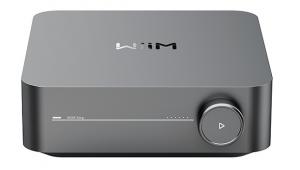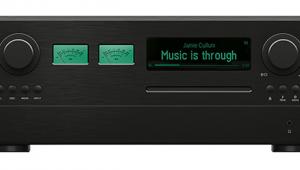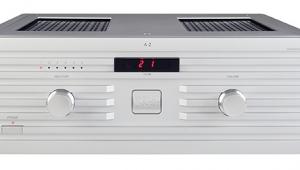Moonriver Audio Model 404 Reference Integrated Amplifier

 This boutique brand from Sweden has quietly been making a name for itself with a classically-styled, modular integrated amp. We test the 'tickled up' Reference version
This boutique brand from Sweden has quietly been making a name for itself with a classically-styled, modular integrated amp. We test the 'tickled up' Reference version
Anyone who spends time idly clicking between websites will be familiar with the HTTP 404 error, which occurs when a browser can't find what it was looking for. Coincidentally, the Moonriver Model 404 Reference amplifier, which is priced from £4495, has a similar 'error': there may be a USB-B port on its rear panel, offering the prospect of connecting a computer to play music, but there's nothing behind it, due to circumstances beyond the control of the amp's Swedish manufacturer.
More on that in a moment, but what the Model 404 Reference does offer, aside from its somewhat retro looks, is a little flexibility beyond the basic specification of five line inputs, fixed and variable-level line outs, and single speaker terminals fed by a 50W/8ohm-rated amplifier. That £4495 gets you the basic specification, with a MM phono stage raising the price to £4870, and MM/MC to £4995. These options can be specified when ordering, or added later, as presumably will be the USB DAC.
Perils Of Production
Like many companies, Moonriver fell victim to the devastating three-day fire that broke out in the Asahi Kasei Microsystems factory in Nobeoka City, Japan, halting production of AKM's chips. Add in a global surge in demand for microprocessors and Moonriver has found itself unable to offer the digital facilities it was planning. An alternative solution, based around the ubiquitous ESS Sabre DAC family, is still eagerly anticipated.

This illustrates both the benefits and drawbacks of artisan manufacturing, hand-building its products in Sweden – and yes, the name is inspired by the famous Henry Mancini song. On the plus side, it enables the company to make both the standard £3095 Model 404 amplifier (or £3470 with MM phono and £3620 for MM/MC) and the uprated Reference version we have here, whose major change is an enhanced power supply section. In place of the standard 404's 57,000µF of PSU 'storage', the 404 Reference has 107,000µF, with 21,000µF of that dedicated to the discrete preamp section. The Reference also boasts improved mechanical damping and isolation for the audio circuitry.
What's consistent between the two Model 404s is the concept of in-house design and build, and the sense that this is an amplifier built the 'traditional way', complete with facilities such as a tape monitor switch – useful for adding into an AV loop – balance control and even a mono/stereo selector.
Back To Basics
Adding to that 'old-school' feeling is the use of discrete through-hole components rather than the more usual surface-mount types, with removable panels giving service access to the main board from above and below. The company was founded by George Polychronidis, whose background is in audio repair and servicing, and that shows in the production engineering here.

Under the bonnet are five separate power supplies fed by a hefty, if not extravagant toroidal transformer, high-quality components (including a motorised ALPS Blue volume control), relay input switching, and a dual-mono power amp stage, even if the latter uses TI 'amp on a chip' modules rather than all-discrete stages. Why? Well, the designer believes that this integrated solution, properly implemented, offers more than sufficient headroom and dynamics – which is what the 404 Reference is designed to deliver via its WBT Nextgen speaker terminals.
Adding to the '60s/'70s aesthetic here is the general simplicity of operation, unless you have the phono stage fitted as you'll need to remove 13 screws to make any adjustments. The four main controls – for input, tape monitor, balance and volume – are chunky and feel solid in operation, while there are just three switches, for power, mono/stereo and dimming or extinguishing the front panel illumination. Completing the front panel is an 'output' lamp: this lights after the amplifier has carried out its soft-start sequence on power-up, which takes less than ten seconds, and turns red if the mute button on the remote is pressed.
![]() Dream Maker...
Dream Maker...
As there are limited frills on offer, it's easy to get the 404 Reference up and running with a mere glance at the instruction manual. Nevertheless, the latter is still worth reading for its discussion on the merits of facilities such as the tape monitor, balance control and mono switch. As it says, '"less" may well be "more", but "better" is to have a choice', an approach entirely consistent with the no-nonsense design philosophy here.

















































